John Hurrell – 22 June, 2009
There are 26 artists here, including the Australian photographer Bill Henson who has a whole room to himself to display eight night-time images. This is an excellent show, yet oddly it is only up for a month. Make sure you see it.
Auckland
Group exhibition
For Keeps: Sampling recent acquisitions 2006-2009
Curated by Natasha Conland
18 June - 12 July 2009
In the upstairs part of the New Gallery Conland has prepared a snappily elegant new acquisitions show which looks spare and understated, but where there is a lot more work than you think. Some of it was purchased by AAG, much of it is loaned by the Chartwell Trust, and a few choice items were donated by the artists. The smallest work is a clay, spaghetti and putty concoction by Dan Arps and the largest ones by Michael Parekowhai (a fibreglass sculpture) and John Reynolds (a metallic and chroma spray painting). There are 26 artists here, including the Australian photographer Bill Henson who has a whole room to himself to display eight night-time images.
Here is the line-up: Vyasheslav Akhunov (Uzbekistan), Hany Armanious (Australia), Dan Arps, Nick Austin, Mladen Bizumic, Julian Dashper, Simon Denny, Denise Kum, Alicia Frankovich, Bill Hensen (Australia), Allan McDonald, Daniel Malone, Richard Maloy, Monique Jansen, Annette Messager (France), Dane Mitchell, Ryan Moore, Michael Parekowhai, Margaret Turner Petyarre (Australia), Layla Rudneva-Mackay, Marie Shannon, Sriwhana Spong, John Reynolds, The Estate of L. Budd, Sergey Tichina (Uzbekistan), and Rohan Wealleans. Note the paucity of artists from below the Bombay Hills. Zilch in fact. It is really a regional, not a national, focus. (Mind you Christchurch is the same, but they openly state it as Collection Policy.)
I don’t think all the individual items are good (the Malone /Kum and Dashper videos pall quickly. They are irritatingly juvenile), but the work is hung really well, with lots of shrewd interconnections between the different projects. Some of the work here looks seductively beautiful in a way that was unapparent when it was first shown in a dealer gallery. For example: Dan Arps’ three works look particularly gorgeous with lots of room around them, especially a translucent pink anorak thrown onto a piece of polystyrene on the floor, and an inverted surfie poster gesturally activated with silver paint and goobers of smeared Blu-tack.
Nick Austin - Arps, Denny and Malone’s Gambia Castle colleague - has a set of delicate paintings of unmatched solo socks rendered with feathery brushstrokes on vertical sections of newspaper. It’s an amusing comment on the vagaries of washing machines and daily wear and tear.
The two collaborating Uzbekistan artists, Vyasheslav Akhunov and Sergey Tichina do well with two videos that were shown in the Turbulence Triennale. One work in particular about meditating or praying while pressing the body in inaccessible corners (high up in precarious ruins, or on top of ancient archways) is very simple, but with a lot of emotional power as bodily gesture.
Bill Henson’s haunting room of images features nocturnal landscapes and bungalows - with naked or semi-clad teenagers sexually experimenting in a darkened park, or riding BMXs. Each image is superbly staged and lit with shimmering pools of light, so that even a bare mud road looks sensational. The skinny, very delicate boys and girls look emotionally uninvolved, almost stunned in their indifferent embraces.
On one gallery wall Allan McDonald has eight images of illuminated opportunity shop ceilings - mainly with fluorescent fittings. They act as a reference for two Simon Denny photographs on the opposite wall of a framed poster he found in a Germany burger bar. It was of the Chrysler and Empire State buildings in New York. The poster was flanked by small neon tubes, so Denny has placed tubes in boxes with his own images in their deep frames, according to the angle of his camera to the original poster.
Of the other two walls of that room one has a set of three photos by Richard Maloy that show him with large plastic bags over his head, of different colours. The blue one resonates nicely with a Sriwhana Spong collage about Nijinsky on the far wall, where she has placed deep blue colour correction filters over a photocopied section of the great dancer’s biography.
What Conland has done with lights and colour as small details in one room she repeats with vertical columns of pencilled numbers in another. Monique Jansen’s gridded graph book with its skeletal rows and columns framing lines of removed squares has a line of scribbled numbers on one page. Similar numbers are found on the ‘blonded’ awning from The Estate of L. Budd, Unity of Appearance, on the opposite wall. With thin paint on its top surface and the original coloured stripes left underneath, it references conflicting interiorities, and the need for a self’s protection from social factors demanding consistency, ‘raining down’ upon them.
Like Budd’s wall projection, Julian Dashper and Rohan Wealleans’ paintings are remarkably evocative. Dashper has seven works in a row on one wall that seem to reference the letters of his own name. Most are linen stretchers stacked in multiples and reversed, but some are plastic records or tondos. Wealleans has only one work, a large white rectangle where the thin outer skin of paint has been cut away and pulled back to reveal chipped away stratified facets of solid white carved pigment, like geometric, crystalline mountain peaks.
It is good to see two Alicia Frankovich photographs from her earlier Starkwhite show presented here: images of a bunch of tomatoes hanging from a ceiling, and a strange rope ladder/hammock from which fabric is falling out at the top. These images were baffling at the time, but after her recent series of performances and talks they make a lot more sense with their references to height, gravity and temporary suspension.
Margaret Turner Petyarre’s work is unusual for Aboriginal dot painting. It looks from a distance like concentric circles made out of spiralling wire netting, but in fact is made up of thousands of small curved lines of ten dots each. These decrease in size from top to bottom and are carefully painted in position. The painting looks surprisingly industrial.
The Hany Armanious wall sculpture is a cast piece of polyurethane that looks like a battered slab of polystyrene, bearing patterned indentations from its past life as protective packing. It looks incongruous hanging on the wall, this chunk of foam plastic waste declaring itself to be art. Perhaps it should be leaning up from the floor.
One of the two main sculptures is a huge Michael Parekowhai dancer in a black leotard lying on the floor in a recovery position. She looks serene as she dominates the small gallery with considerable physical and psychological impact. The other large sculpture in another room is a Peter Robinson polystyrene work of crumbled blocks and flowing cascading chains, a brilliant work in its invention and exploration of a new materiality, and its evocation of lichen or grass covered rocks and hairy animals.
Auckland Art Gallery has a great display here of its new contemporary acquisitions (and I’ve picked out a few samples) but it needs a catalogue of some kind for the public to take home and read. Much of this art also needs skilled explanations in special artist folders to help win the venue new audiences, for the wall labels aren’t sufficient. If ARTSPACE has a reading room, then why not AAG where the need is far more pronounced? They should throw away the junk-filled card and wrapping paper shop downstairs and give the public the educational facility they need.
This is an excellent show, yet oddly it is only up for a month. Make sure you see it.
John Hurrell
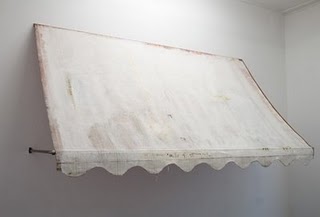
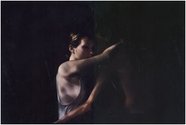
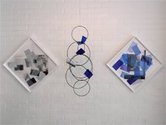
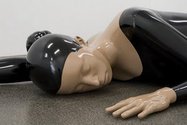

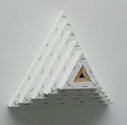
 Two Rooms presents a program of residencies and projects
Two Rooms presents a program of residencies and projects Advertising in this column
Advertising in this column



This Discussion has 0 comments.
Comment
Participate
Register to Participate.
Sign in
Sign in to an existing account.